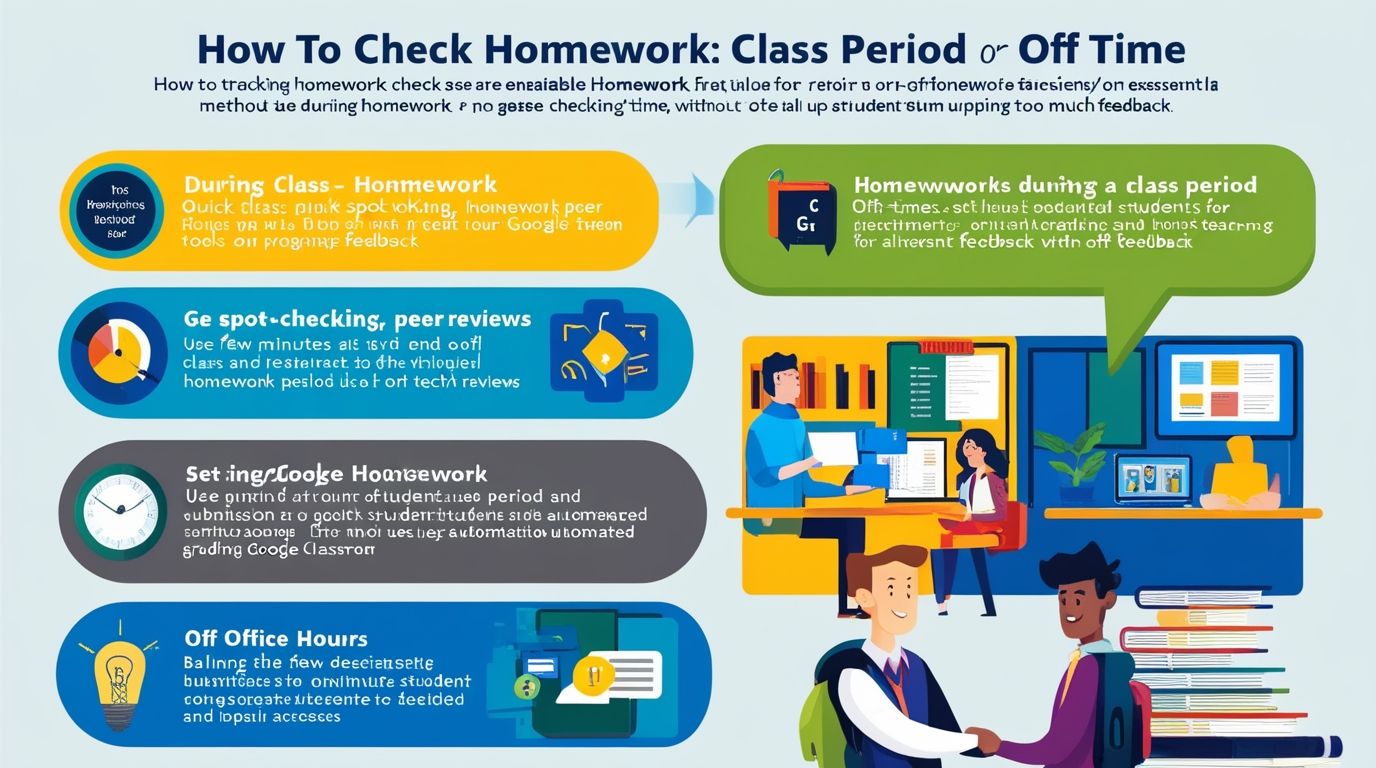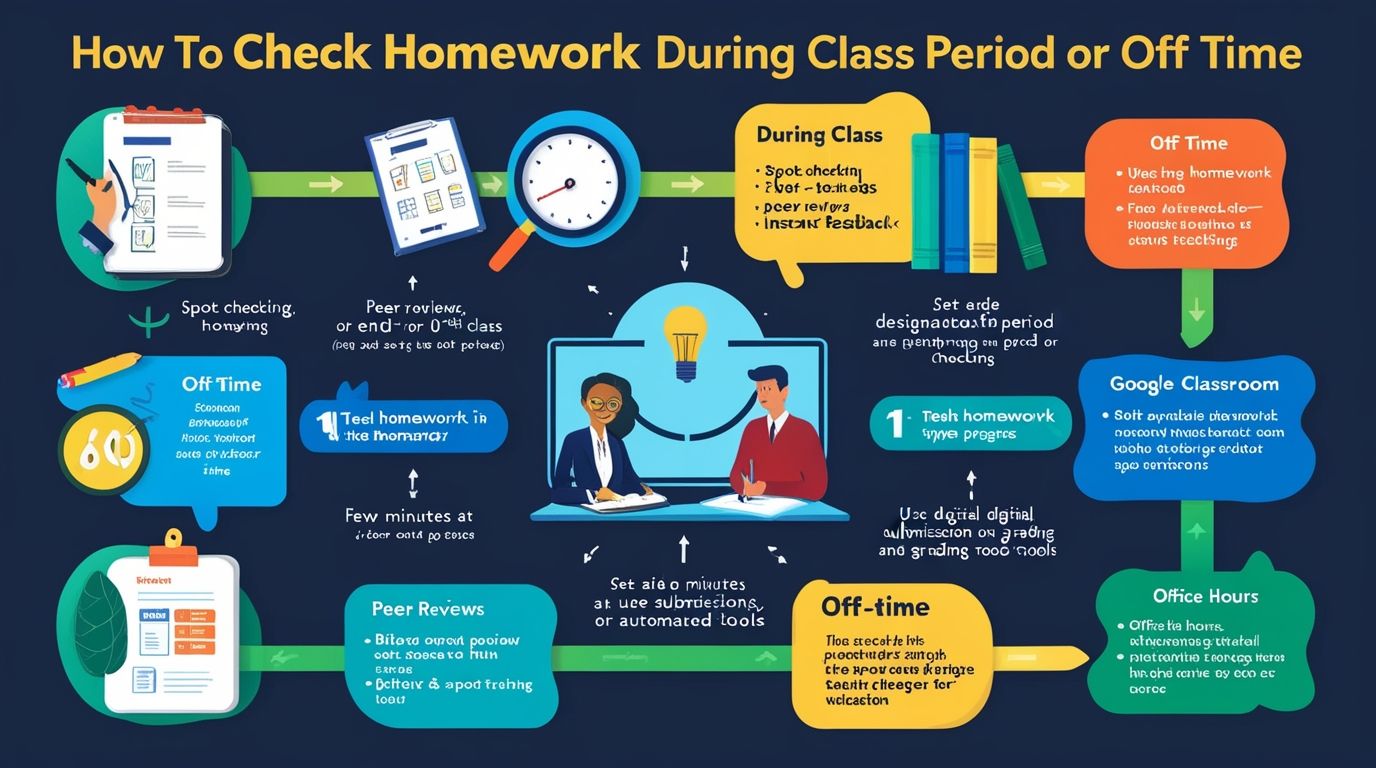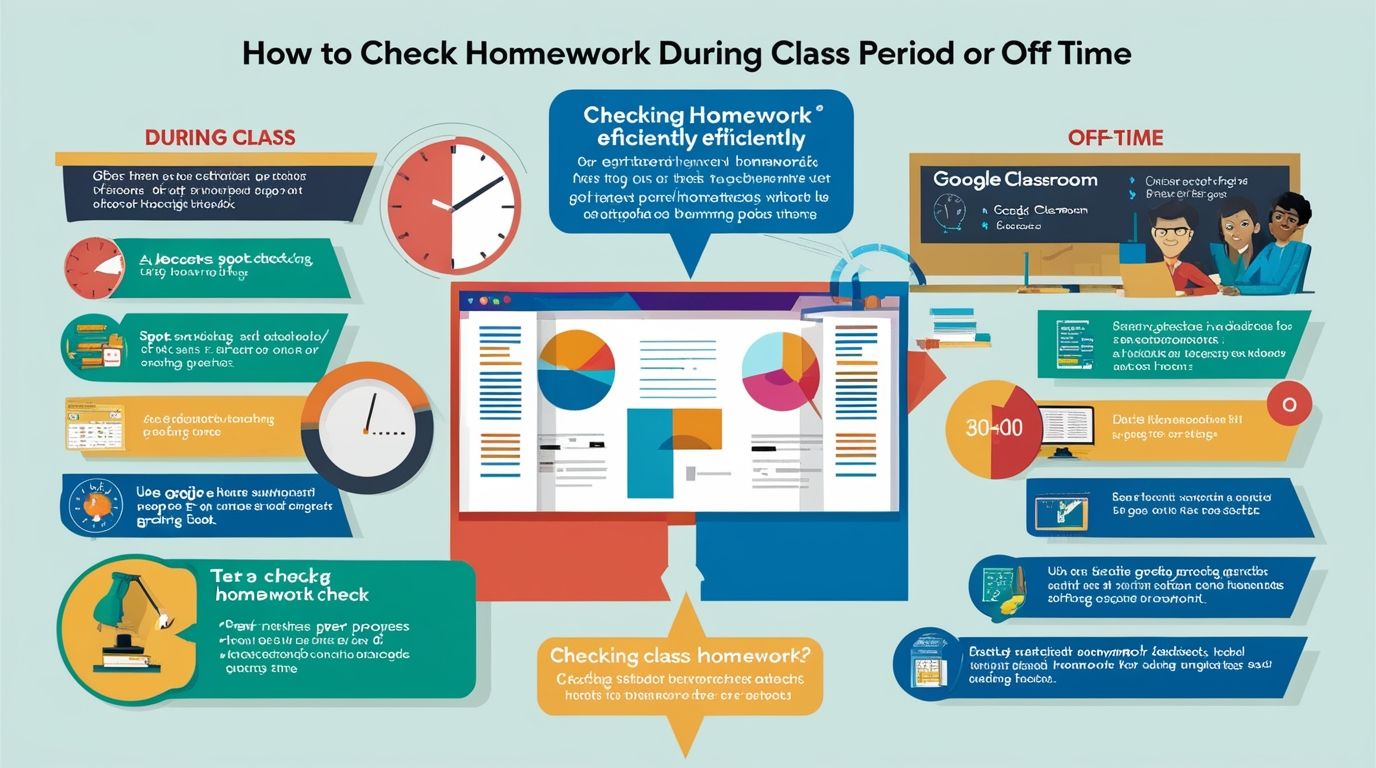Introduction
How to Check Homework During Class Period or Off Time Homework is a critical component of the learning process, allowing students to practice and consolidate what they’ve learned in class. However, checking homework can be time-consuming for teachers, especially when balancing other instructional duties. Efficiently managing homework review during class periods or off time is essential to ensure student progress without overwhelming the teacher. This article explores effective strategies for checking homework during class and outside of regular teaching hours, highlighting ways to optimize this process for both teachers and students.
Strategies for Checking Homework During Class Period
- Quick Reviews: Spot-Checking AssignmentsSpot-checking involves reviewing a sample of student homework rather than going through each assignment in detail. This approach allows teachers to assess the general understanding and identify common errors without spending excessive time on each student’s work. Teachers can rotate which students’ work is checked or focus on different sections of assignments each time, ensuring all students receive attention over time.
- Peer Review: Allowing Students to Check Each Other’s WorkPeer review is an interactive strategy where students exchange their homework with classmates for checking. This method not only saves time for the teacher but also promotes student engagement and collaborative learning. To ensure quality, teachers should provide clear guidelines or rubrics for students to follow when reviewing their peers’ work. Peer review also helps students learn from each other’s mistakes and successes, reinforcing their understanding of the material.
- Use of Technology: Apps and Tools for Quick AssessmentIntegrating technology in homework checking can streamline the process significantly. Tools like Google Classroom, Edmodo, or specialized apps like GoFormative and Socrative allow for quick submission, grading, and feedback. These platforms can automatically grade multiple-choice or short-answer questions, providing immediate feedback to students. For assignments requiring more detailed responses, teachers can use comment features to provide feedback efficiently.
- Time Management: Allocating Specific Class Time EfficientlyEfficient time management within the classroom is crucial for balancing instruction with homework review. Teachers can allocate a few minutes at the beginning or end of the class for quick homework checks. Grouping students and using these checks as a learning activity can further enhance the process. For instance, starting a class with a brief homework review session can serve as a refresher on previous topics, setting a strong foundation for the new lesson.

Strategies for Checking Homework During Off Time
- Designating Specific Periods for Homework ReviewAllocating specific times outside of teaching hours for homework review helps manage workload without impinging on instructional time. Teachers can set aside a few hours weekly, such as after school or during prep periods, specifically for this purpose. Establishing a routine for homework review can make the task feel less overwhelming and more structured.
- Digital Submission and Automated Grading ToolsUtilizing digital submission platforms like Google Classroom, Microsoft Teams, or Schoology allows students to submit their homework electronically, which teachers can then review at their convenience. These platforms often include features for automated grading of certain types of assignments, such as quizzes or fill-in-the-blank exercises, which can significantly reduce the time teachers spend on grading.
- Utilizing Office Hours or Scheduled Times Outside ClassTeachers can offer designated office hours or scheduled review sessions where students can discuss their homework. This approach is particularly effective for assignments that require more personalized feedback or involve complex concepts. It allows teachers to address individual student needs without dedicating entire class periods to homework review, making it an efficient use of time outside regular class hours.
Balancing Efficiency and Effectiveness
- Setting Clear Guidelines and Expectations for HomeworkOne of the most effective ways to streamline homework checking is by setting clear expectations for assignments. When students understand what is expected of them, they are more likely to complete homework accurately, reducing the need for extensive corrections. Providing a rubric or checklist can guide students in meeting the homework criteria, making the review process smoother for teachers.
- Providing Constructive Feedback versus Simple Completion ChecksWhile checking homework for completion can be time-efficient, providing constructive feedback is essential for student growth. Teachers can strike a balance by using a combination of quick checks and more detailed reviews where needed. For instance, assignments that show common errors or misunderstandings may warrant more in-depth feedback, while simpler tasks can be checked for completion.
- Encouraging Self-Assessment and ReflectionEncouraging students to self-assess their homework before submission can reduce errors and improve quality. Providing self-assessment tools, such as checklists or reflective prompts, can help students identify areas for improvement on their own. This practice not only lightens the teacher’s workload but also fosters student accountability and self-directed learning.

Challenges and Solutions
- Time Constraints: Balancing Checking with Other ResponsibilitiesOne of the primary challenges teachers face is the time constraint of balancing homework checking with other teaching responsibilities. To address this, teachers can prioritize assignments that require detailed feedback while using quicker methods for simpler tasks. Delegating some review tasks to peer assessments or using technology can also alleviate this burden.
- Student Engagement: Ensuring Meaningful Homework ReviewTo maintain student engagement, it’s crucial that homework checks are meaningful and perceived as valuable. Feedback should be actionable, helping students understand their mistakes and learn from them. Teachers can keep reviews engaging by incorporating discussions, where students can ask questions or explain their thought processes, making homework checks an interactive part of the learning experience.
- Adapting Strategies for Different Subjects and Student NeedsDifferent subjects and student needs require tailored approaches to homework checking. For example, math assignments might benefit from spot-checks or digital tools that offer instant grading, while language arts tasks might require more detailed feedback. Adapting strategies to fit the content and the students’ learning styles can make homework checking more effective and manageable.
Conclusion
Checking homework is an integral part of the educational process, providing teachers with insights into student understanding and progress. By employing strategies such as spot-checking, peer review, and the use of technology, teachers can efficiently manage homework checks during class periods or off time. Balancing efficiency with effectiveness is key, ensuring that homework reviews are both manageable for teachers and valuable for students. With thoughtful implementation of these strategies, teachers can streamline the homework review process, enhancing student learning without overwhelming themselves.
References
- Brookhart, S. M. (2017). How to Give Effective Feedback to Your Students. ASCD.
- Marzano, R. J. (2012). Classroom Management That Works: Research-Based Strategies for Every Teacher. ASCD.
- Shute, V. J. (2008). Focus on Formative Feedback. Review of Educational Research, 78(1), 153-189.
- Tomlinson, C. A. (2014). The Differentiated Classroom: Responding to the Needs of All Learners. ASCD.

8 thoughts on “How to Check Homework During Class Period or Off Time”
Comments are closed.